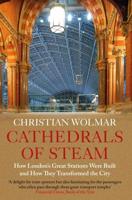Publisher's Synopsis
Railway commuting is today a mundane and routine necessity, yet for the Victorians it was a novel experience. It opened up new possibilities of living at a remove from the crowded urban centre while staying connected to its places of work. Commuting helped transform London's urban landscape, as the compact city of Dickens's London gave way to the suburban sprawl of the British capital in the early twentieth century.
Slow Train to Arcadia is a history of London's suburban railway network from the 1830s to 1921 and its impact on urban mobility. The book charts the relationship between the three main actors in the formation of the suburban railway: the state, the railway companies, and the travelling public. While the railway age came quickly to Victorian Britain, commuting took a slower journey to commonplace status. In the 1840s William Gladstone sought to make railway travel accessible to all, but commuting was experienced differently according to class and gender. Slow Train to Arcadia explains why the democratization of commuting proved to be an elusive goal.
Today's workers are living through a fundamental reversal in the relationship between home and the workplace. For many, a daily commute is being consigned to history, a shift that will have long-term social and economic consequences. Slow Train to Arcadia is a timely exploration of the origins of mass commuting, a similarly transformative period for the daily patterns of working life.









